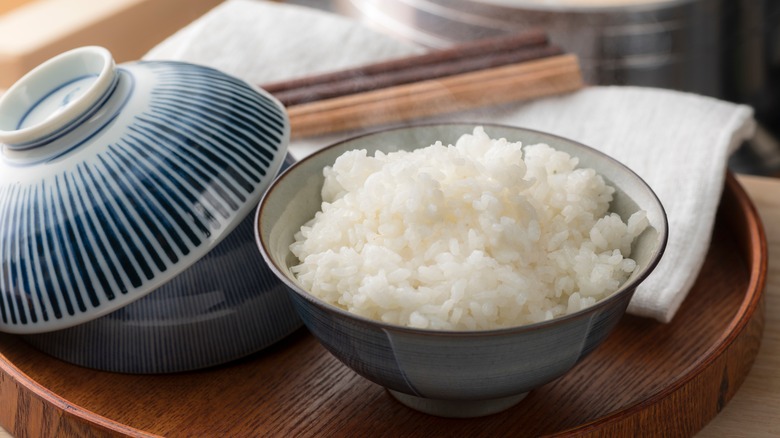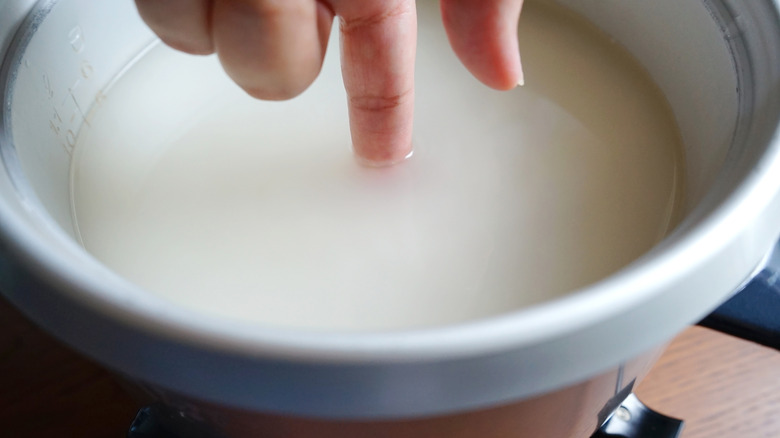The Rice Cooking Method That Ditches Conventional Measuring Rules
In a comedy skit uploaded onto YouTube, Filipino-American comedian Jo Koy talks about how he was taught how to make rice for the first time — with no rice cooker, no measuring equipment: just a pot, a "broken cup" to measure the grains with, and his index finger.
The skit makes for great comedy, but it also reveals the truth about how many Asian households make perfect white rice every time, which the Kitchn simply calls "the knuckle method." It involves pouring rice into a pot, and using the lines on the inside of your finger as a guide while adding water up to the first crease — also called the "distal interphalangeal (DIP) crease".
Once the rice is in the pot, Yummy says the rice should be cooked over high heat until the water starts to boil. Then, the heat should be lowered until all of the water has evaporated. Turn off the heat, let sit for an extra five minutes to allow the steam to finish cooking the rice, and it's ready to serve.
Science can explain how the knuckle method works
There are other ways to cook rice without any measuring equipment. Consumer Reports says that while some have been taught to use their index finger, others insist that the middle finger is the only way to go. A third variation involves planting your entire palm flat on the surface of the rice, and adding water until it levels off at the back of your hand.
It might sound like culinary alchemy to work out the rice-to-water proportion this way — particularly since the trick works, regardless of how large or small your fingers happen to be. However, Exploratorium says there is a scientific explanation for why this works. It partially has to do with the fact that the distance between the tip of an index finger to the first crease is practically the same, no matter what.
It also has to do with the way uncooked rice and water interact. When rice is poured into a pot and water is added, the liquid doesn't just sit on top — it actually gets in between the grains. The amount of water that evaporates is roughly equivalent to the amount of water that reaches your finger's first crease. However, the method only works for small quantities and isn't scalable. If you're cooking a large portion, the method isn't guaranteed to work. Because of this, you're better off using a rice cooker.

